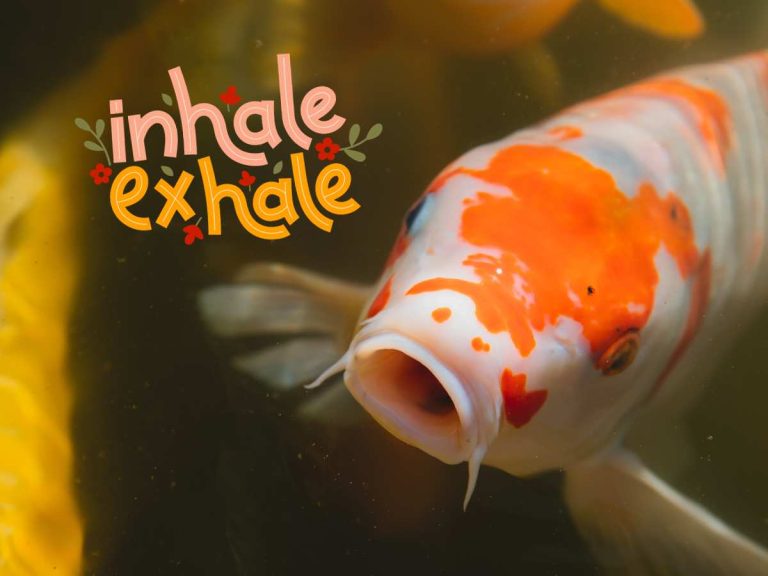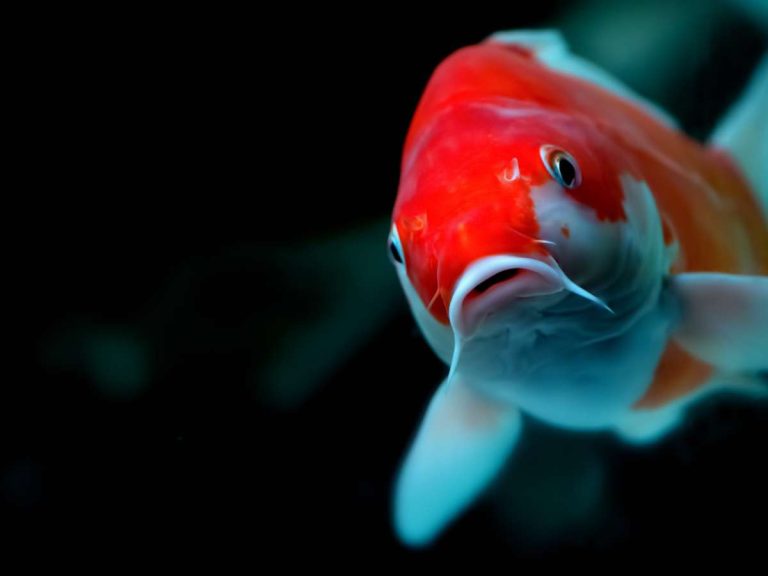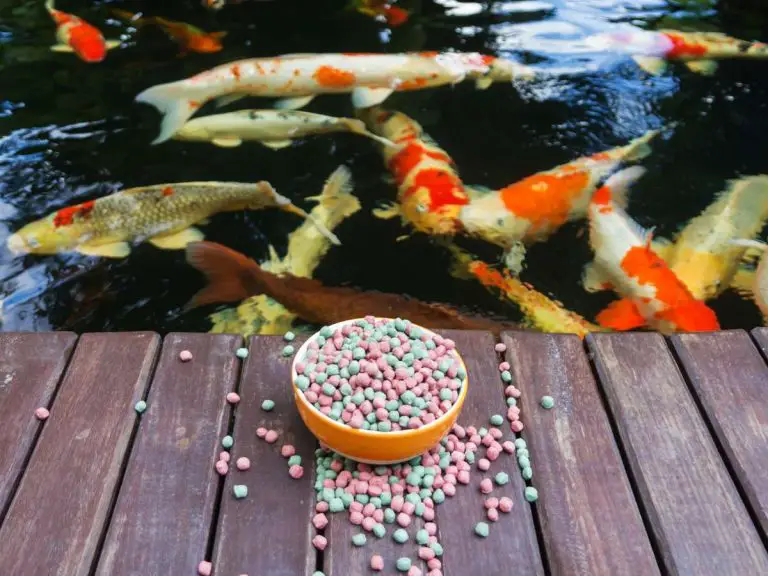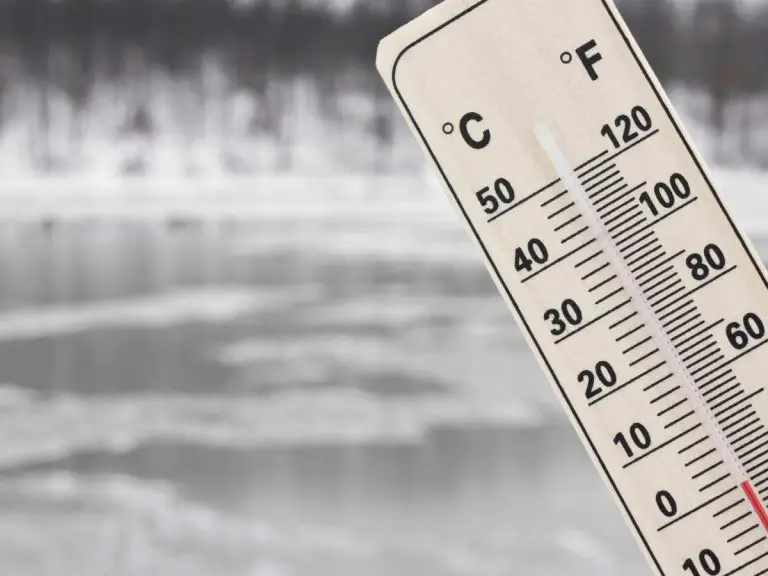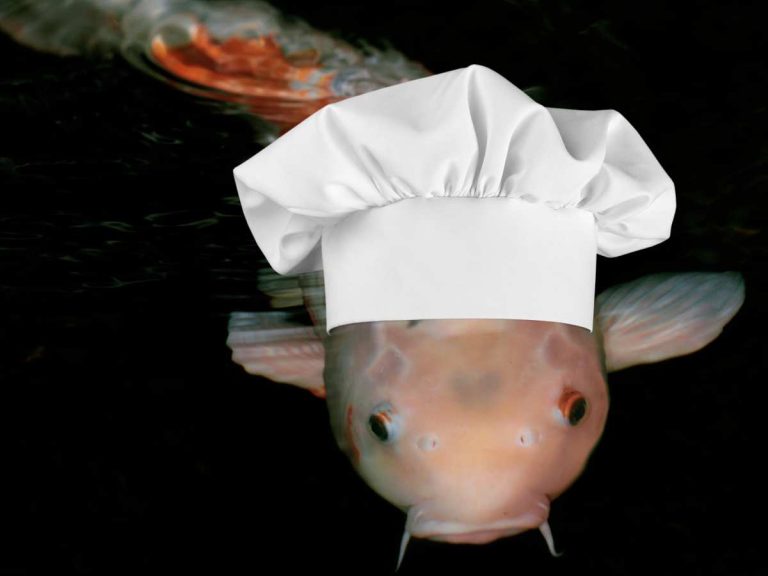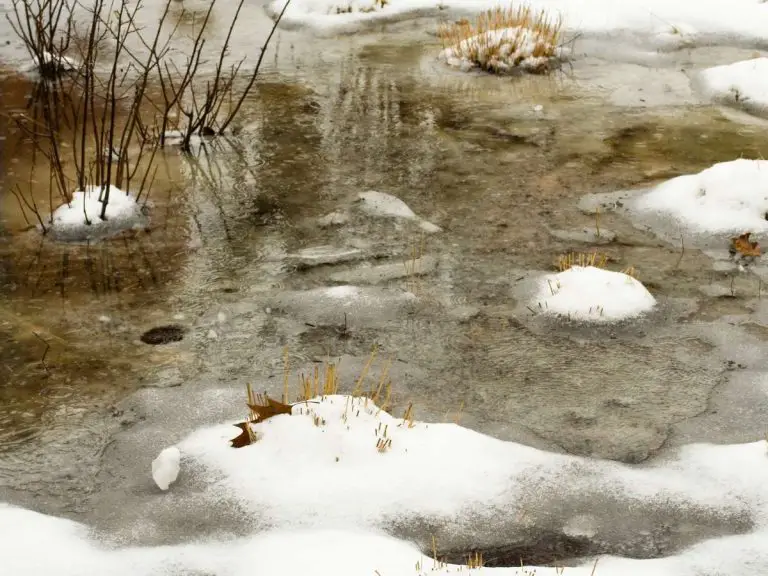Doitsu Koi Fish Care: How Keep These Beautiful Fish Happy & Healthy
Doitsu Koi fish: unique, beautiful, and a great addition to any backyard pond.
Doitsu koi are a unique and beautiful variety of Koi. They are known for their distinct scales, which cover their bodies in a neat pattern. These scales, called “doitsu,” can be either mirror or leather-like. Mirror scales are large and reflective, while leather-like scales are smaller and have a more textured appearance. Doitsu Koi fish come in a wide range of colors and patterns, making them a popular choice among Koi enthusiasts.
If you’re considering getting Doitsu Koi fish for your pond, it’s important to learn how to properly care for them. In this comprehensive guide, we will provide you with all the information you need to keep your Doitsu Koi fish healthy and happy. From choosing the right fish to creating the perfect pond environment, feeding guidelines, and health maintenance tips, we’ve got you covered.
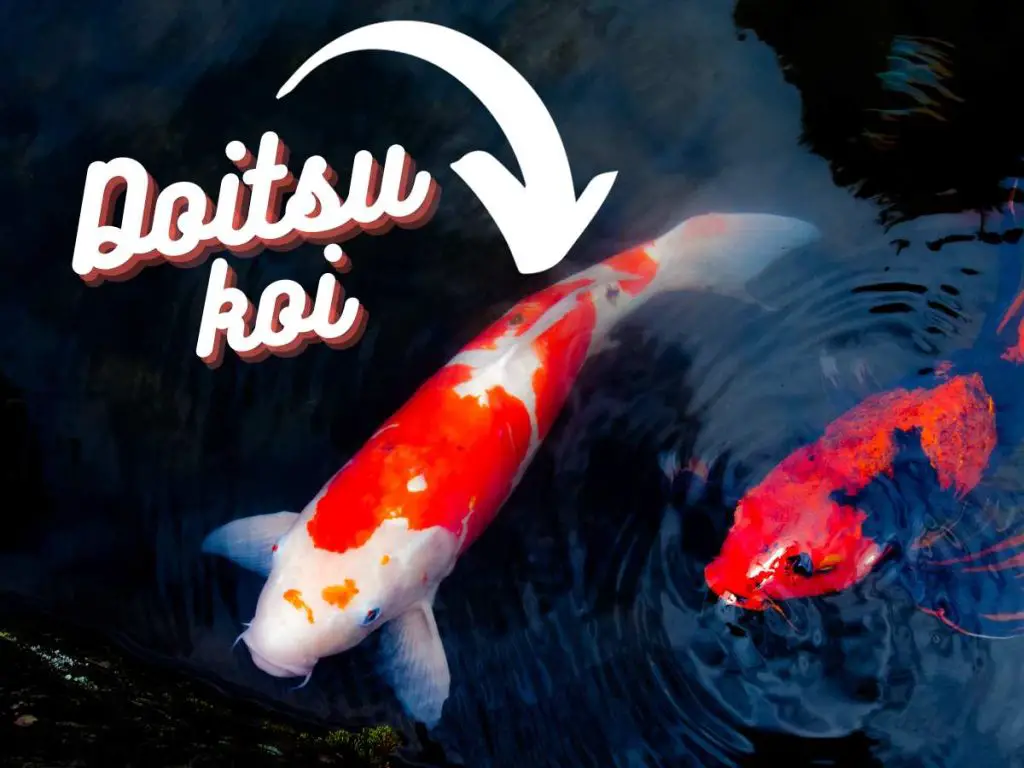
Where did Doitsu koi come from?
Doitsu koi, often recognized by their absence of scales, present a unique and striking appearance that distinguishes them from other koi varieties. The term “Doitsu” refers to koi that have no scales, except for enlarged ones along the lateral and dorsal lines. The origin of Doitsu koi can be traced back to the early 1900s when Japanese koi were crossbred with German mirror carp, a prevalent food source. These German mirror carp were characterized by their large, shiny scales and robust bodies.
Some of the offspring from this crossbreeding exhibited non-traditional and alternative scalation, leading them to be identified as Doitsu, which is the Japanese word for “Deutsch” or German. Over time, koi have been further crossbred, resulting in Doitsu versions of all koi varieties.
Different types of Doitsu scalation have emerged due to breeders’ focus on scale development, all commonly referred to as Doitsu.
In general, koi fish have a rich history that spans centuries. Originating from East Asia, these fish were initially used as a food source. It wasn’t until they were brought to Japan that they were bred for their color variations, leading to the diverse and vibrant koi we recognize today. The Doitsu variety, with its unique scalation and bright colors, adds to the rich tapestry of koi history and evolution.
Are Doitsu koi more expensive?
While Doitsu koi can be more expensive due to their unique appearance and the intricacies involved in breeding them, it’s essential to note that the price of any koi fish, Doitsu or otherwise, is influenced by a combination of factors. These include the fish’s lineage, size, health, color quality, pattern uniqueness, and even the reputation of the breeder. As with any purchase, potential buyers should conduct thorough research and consult with reputable breeders to ensure they are getting a fair price for the quality they desire.
The pricing of Doitsu koi, like other koi varieties, can vary based on several factors. One of the primary determinants of a koi’s price is its appearance. Doitsu koi, with their absence of scales, often exhibit brighter colors and more defined patterns compared to their fully-scaled counterparts. This is because the pigments in Doitsu koi are not obscured by traditional scales lying over the colors, resulting in sharper patterns and clearer color distinctions.
Another factor influencing the price is the quality and uniformity of the scales that are present in Doitsu koi. Well-aligned, symmetrical scales on the dorsal and lateral lines are highly desirable. Scales that appear neat, balanced, and orderly can increase the value of the fish. Additionally, the overall health, size, and lineage of the koi can also play a role in its pricing.
Choosing the right Doitsu Koi fish
One of the main reasons why people keep Doitsu Koi fish is their striking appearance. With their vibrant colors and eye-catching scales, these fish can truly enhance the aesthetic appeal of any pond. In addition to their visual appeal, Doitsu Koi also have a reputation for being hardy and resilient. They are known to adapt well to a variety of pond conditions and can thrive in both indoor and outdoor settings.
When it comes to selecting the perfect Doitsu Koi fish, there are a few important considerations to keep in mind, especially when purchasing koi online. First and foremost, you want to make sure that the fish you choose is healthy and in good condition. This will ensure that your new pet thrives in its new environment.
Age, size, and overall appearance are all key factors to consider when selecting Doitsu Koi fish. Younger fish tend to adapt better to new environments, while older fish may be more set in their ways. As for size, it’s best to choose a fish that is proportionate to your pond or tank to prevent overcrowding.
When inspecting the overall appearance of a potential Doitsu Koi fish, look for vibrant colors, clear eyes, and smooth scales. These are signs of a healthy fish. It’s also important to check for any signs of disease or deformities. Be on the lookout for spots, sores, or odd swimming behavior.
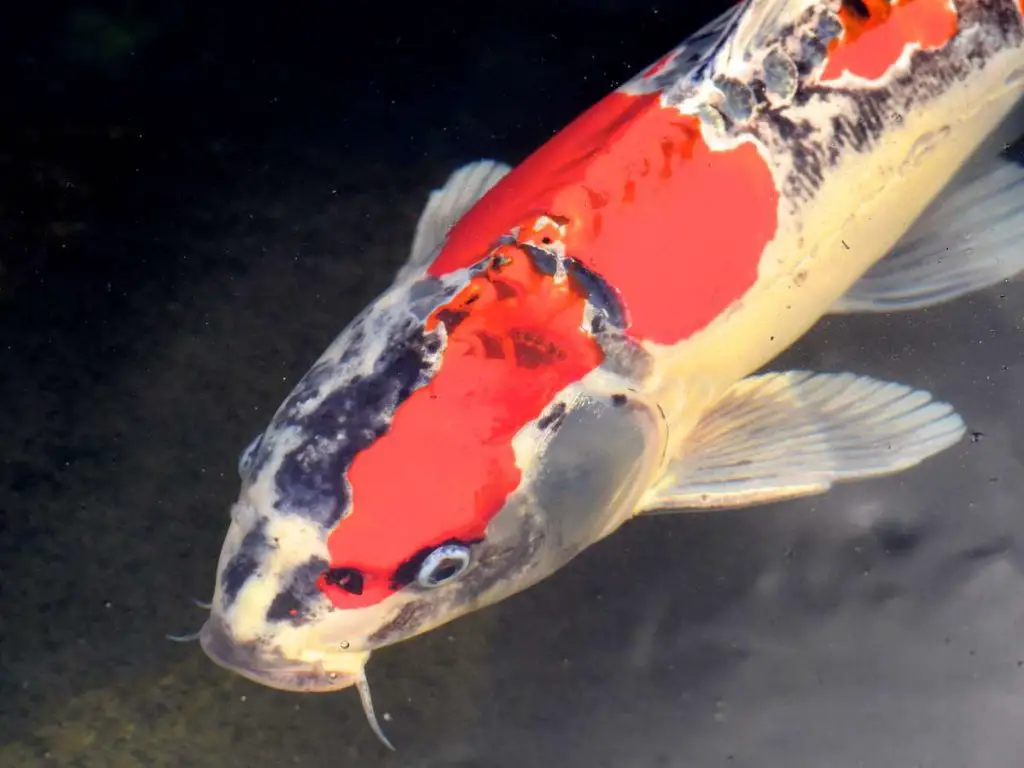
Understanding different varieties of Doitsu Koi fish
The world of Doitsu Koi is vast and diverse, with each variety showcasing a unique blend of colors, patterns, and scalation. Originating from the crossbreeding of Japanese koi with German mirror carp, Doitsu Koi have become a favorite among koi enthusiasts due to their distinctive appearance, often characterized by the absence of traditional scales. Instead, they may have enlarged scales along their dorsal and lateral lines, allowing their vibrant colors to shine through more vividly. Here are some of the prominent Doitsu Koi varieties:
- Kohaku: A classic variety, the Kohaku Doitsu Koi boasts a pristine white body that serves as a canvas for its bold red markings. These markings, known as “hi,” can range from deep crimson to bright scarlet, creating a striking contrast against the fish’s scale-less body.
- Gin Matsuba: This variety is known for its shimmering silver-white body, reminiscent of a moonlit night. What sets the Gin Matsuba apart is its unique black pinecone-like patterns that overlay its body. These patterns, combined with the fish’s metallic sheen, create a mesmerizing visual effect.
- Kujaku: Translating to “peacock” in Japanese, the Kujaku Doitsu Koi is a sight to behold. It features a metallic base color, often in shades of gold or orange, adorned with reticulated black markings. These markings, combined with the fish’s radiant base color, evoke the beauty and elegance of a peacock’s feathers.
While these are some of the more common Doitsu Koi varieties, the world of koi is vast, with countless other varieties waiting to be discovered. Each Doitsu Koi, regardless of its variety, brings a unique charm and beauty to any pond or tank, making them a cherished addition for koi enthusiasts worldwide.
| Variety | Description |
|---|---|
| Kohaku | A pristine white body with bold red markings, known as “hi,” ranging from deep crimson to bright scarlet. |
| Gin Matsuba | A shimmering silver-white body with unique black pinecone-like patterns overlaying its metallic sheen. |
| Kujaku | Features a metallic base color, often in shades of gold or orange, adorned with reticulated black markings. |
Creating a suitable environment for your Doitsu Koi fish
One of the most important aspects of keeping Doitsu Koi fish is providing them with a suitable environment to thrive. This means setting up a proper pond that meets their specific needs and ensures their well-being.
Setting up a Doitsu Koi pond
The size, depth, and filtration system of your pond are crucial factors to consider in your pond design. Doitsu Koi fish require ample space to swim and grow, so a larger pond is recommended. Aim for a depth of at least three feet to allow them to comfortably explore their surroundings.
A filtration system is essential in maintaining clean and healthy water conditions for your Doitsu Koi fish. Look for a system that can handle the volume of water in your pond, efficiently removing debris and maintaining proper oxygen levels.
Ensuring proper water quality and temperature levels
Water quality is paramount in providing a thriving habitat for your Doitsu Koi fish. Regularly test the water for pH levels, ammonia, nitrates, and nitrites. This will help you ensure that the water parameters are within the ideal range for your fish.
Additionally, monitoring the temperature of the water is crucial. Doitsu Koi fish thrive in temperatures between 59-77°F (15-25°C). Install a pond heater or chiller as needed to maintain a stable temperature throughout the year.
Providing adequate space and shelter for your Doitsu Koi fish
Aside from a well-designed pond, it’s important to provide additional elements that enhance your Doitsu Koi fish’s environment. Add rocks and plants to create hiding spots and shelter where they can rest and seek protection.
You can also consider adding floating plants like water lilies and water hyacinths. These not only provide shade but also help with oxygenation and natural water filtration.
Tips for maintaining a clean and healthy pond environment
To keep your Doitsu Koi fish healthy, it’s crucial to maintain a clean and balanced pond environment. Regularly remove any excess debris like leaves and uneaten food to prevent them from decomposing and affecting water quality.
You should also periodically check the filtration system for clogs or signs of wear and tear. A well-maintained filtration system ensures optimal water circulation and efficient waste removal.
Feeding and nutrition for Doitsu Koi fish
When it comes to keeping your Doitsu Koi fish healthy and happy, providing a balanced diet is essential.
Importance of a balanced diet for optimal health
Doitsu Koi fish, like any living beings, require a variety of nutrients to thrive. A balanced diet ensures they get all the essential components necessary for their well-being. High-quality food with a good blend of protein, vitamins, and minerals is crucial for their growth and overall health.
Recommended types of food for different life stages
As your Doitsu Koi fish go through various life stages, their nutritional needs change. For fry, or baby Koi fish, special food formulated specifically for their size and digestive systems is ideal. These foods are smaller in size, making it easier for the fry to eat and digest. As they grow into adult Doitsu Koi fish, their diet can be transitioned to larger pellets or flakes that provide the necessary nutrients for their mature bodies.
Essential Nutrients Needed by Doitsu Koi Fish
To ensure the health and vibrancy of your Doitsu Koi, it’s crucial to provide them with a balanced diet that meets their nutritional needs. Here are some of the essential nutrients required by Doitsu Koi:
- Protein: Protein is a vital component of a Doitsu Koi’s diet. It aids in the growth and repair of tissues, ensuring that your fish develop properly and maintain their strength. A deficiency in protein can lead to stunted growth and weakened immunity.
- Vitamins: Vitamins are organic compounds that play a crucial role in various metabolic processes. They are essential for the immune system’s proper functioning, maintaining good vision, and ensuring overall health. Some vitamins also act as antioxidants, protecting the fish from harmful free radicals.
- Minerals: Minerals are inorganic nutrients that are vital for bone development, blood clotting, and maintaining proper biological processes. They also play a role in nerve function and muscle contraction. Ensuring a proper balance of minerals in the diet is crucial for the overall well-being of your Doitsu Koi (you may even want to try making your own homemade koi food).
By understanding the nutritional needs of your Doitsu Koi and providing them with the right food for their life stage, you can ensure their health, longevity, and vibrant colors.
Recommended Types of Food for Different Life Stages
The dietary needs of Doitsu Koi change as they progress through different life stages. Here’s a breakdown of the recommended types of food for each stage:
- Fry Food: When Doitsu Koi are in their fry stage, they require food that is specially formulated for their needs. Fry food comes in smaller particles, making it easier for baby Doitsu Koi to consume. This food is rich in protein and other essential nutrients to support their rapid growth.
- Pellets or Flakes: As Doitsu Koi mature, they transition to eating pellets or flakes. These are high-quality fish foods designed specifically for adult Doitsu Koi. They provide a balanced diet, ensuring that the fish receive all the necessary nutrients for their health and well-being.
- Supplements: In addition to their regular diet, Doitsu Koi can benefit from occasional treats or supplements. These can include live or frozen foods like brine shrimp or bloodworms. Supplements provide variety to the fish’s diet and can offer additional nutrients that might not be present in their primary food source.
Feeding guidelines and schedule
When it comes to feeding your Doitsu Koi fish, moderation is key. Overfeeding can lead to health issues and poor water quality in the pond. It’s best to follow a structured feeding schedule and portion control to ensure your fish get the right amount of food.
Feed your Doitsu Koi fish small amounts multiple times a day, rather than a large single feeding. This helps them digest the food more efficiently and reduces the risk of overeating. It’s important to note that uneaten food should be removed from the pond after each feeding session to maintain water cleanliness.
Portion control and avoiding overfeeding
Determine the appropriate amount of food by observing how much your Doitsu Koi fish consume within 5-10 minutes. Adjust the portion size accordingly, ensuring they finish the food without any leftovers. Remember, it’s better to slightly underfeed than overfeed.
Finally, if you want to add some personal interaction with your Doitsu Koi fish, hand feeding can be a rewarding experience. Use suitable snacks like freeze-dried worms or fish treats to hand feed them. However, if you prefer a more automated approach, automatic feeders are available on the market that dispense food at specific times.
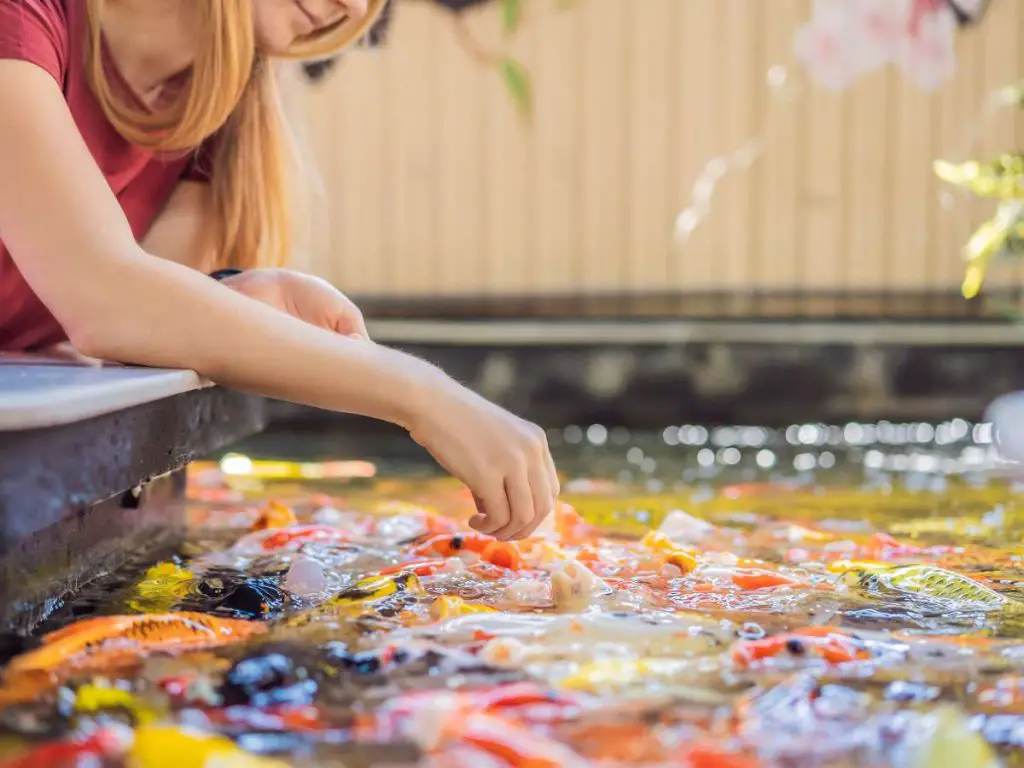
Health maintenance and disease prevention
Keeping your Doitsu Koi fish in optimum health is essential for their overall well-being and longevity. Regular monitoring and preventive measures can help prevent common diseases and infections. Here are some tips to ensure the health of your Doitsu Koi fish:
Regular monitoring of Doitsu Koi fish health
It’s important to keep a watchful eye on the health of your Doitsu Koi fish. Look out for any signs of disease or infection, such as lethargy, loss of appetite, or abnormal swimming behavior. Early detection can save your fish from further complications. Here are some common diseases to be aware of:
| Disease | Symptoms | Treatment Options |
|---|---|---|
| Ich (white spot disease) | Tiny white spots on body and fins, flashing against objects | Treat with anti-parasitic medications |
| Fin rot | Ragged, split fins with discoloration or deterioration | Isolate affected fish and treat with antibacterial medication |
| Gill flukes | Labored breathing, excess mucus production, rubbing against surfaces | Treat with anti-parasitic medications |
Preventive measures to ensure the well-being of your Doitsu Koi fish
An ounce of prevention is worth a pound of cure when it comes to keeping your Doitsu Koi fish healthy. Here are some preventive measures to implement:
Water quality testing and maintenance
Regularly test the water quality parameters of your pond, including pH, ammonia, nitrate, and nitrite levels. Maintaining proper water conditions is crucial for the overall health of your Doitsu Koi fish. Ensure adequate filtration and perform regular water changes to keep the water clean and free from harmful toxins.
Quarantine procedures for introducing new fish to the pond
Before introducing any new fish to your Doitsu Koi pond, it’s important to quarantine them. This step helps prevent the spread of diseases or parasites to your existing fish population. Quarantine new fish in a separate tank for a few weeks, closely monitoring their health before introducing them to the main pond.
Handling and identifying Doitsu Koi fish varieties
When it comes to handling your beloved Doitsu Koi fish, it’s essential to take extra care to avoid causing them any stress or injury. Here are a few proper techniques you should follow:
Proper techniques for handling Doitsu Koi fish
Firstly, when catching or transporting your Doitsu Koi fish, make sure you do it with gentle hands. Avoid grabbing them forcefully as this may harm their delicate fins and scales. Instead, use a fish net designed specifically for Koi fish, gently guiding them into it.
Secondly, releasing your Doitsu Koi fish back into the pond should also be done with caution. Make sure you give them enough time to adjust before letting them go. Slowly move the net or container with your fish underwater and allow them to swim freely out of it at their own pace.
Common challenges and how to solve them
When it comes to keeping Doitsu Koi fish, you may encounter common challenges along the way. Don’t worry, though – with a little know-how and some troubleshooting, you can easily overcome these issues and ensure your Doitsu Koi fish thrive in their pond.
Algae control and prevention
One of the most common challenges for Doitsu Koi fish owners is dealing with algae growth in their pond. Algae can make your pond look unsightly and disrupt the natural balance of the ecosystem. To control and prevent algae, there are a few steps you can take.
The first step is to maintain proper water quality. Algae thrives in nutrient-rich environments, so it’s essential to limit excessive nutrients in your pond. Avoid overfeeding your Doitsu Koi fish and remove any uneaten food promptly. Additionally, consider adding a biological filter to help process waste and keep nutrient levels in check.
Another strategy is to provide shade and reduce sunlight exposure in your pond. Algae rely on sunlight for photosynthesis, so limiting the amount of direct sunlight can impede their growth. You can achieve this by adding aquatic plants or installing a pond cover or shade sails.
Regular maintenance is vital in combating algae as well. Be sure to routinely clean your pond by removing debris and regularly check the nutrient levels. You can also consider using algaecides or natural additives like barley straw extract to control algae growth.
Managing water temperature fluctuations
Water temperature fluctuations can pose a challenge for Doitsu Koi fish, especially during extreme weather conditions. It’s important to monitor the water temperature regularly and take steps to mitigate any sudden changes.
In colder months, when temperatures drop significantly, you might need to consider a pond heater or de-icer to prevent the water from freezing over. A frozen pond can lead to oxygen depletion and harm your fish. Using a pond heater or de-icer ensures that a portion of the water remains ice-free, allowing gases to exchange with the atmosphere.
In hot summer months, when temperatures soar, you can take precautions to cool down the water. Adding shade and increasing aeration can help lower the water temperature. Consider installing a fountain or waterfall feature, as the movement of water increases oxygen levels and cools down the pond.
It’s essential to be proactive in managing water temperature fluctuations and ensuring that your Doitsu Koi fish have a stable and comfortable environment throughout the year.
Conclusion
We’ve covered everything from choosing the right fish to creating a suitable environment, feeding and nutrition, health maintenance, handling and identifying different varieties, and troubleshooting common challenges.
Let’s quickly recap the main points:
- Choose healthy Doitsu Koi fish based on age, size, appearance, and absence of disease or deformities.
- Understand the different types and varieties of Doitsu Koi fish to find the perfect one for your pond.
- Set up a proper environment with the right pond size, depth, filtration system, and water quality and temperature levels.
- Provide adequate space and shelter for your Doitsu Koi fish using recommended accessories like rocks, plants, and hiding spots.
- Feed your fish a balanced diet with essential nutrients tailored to their life stages. Remember to avoid overfeeding.
- Regularly monitor your fish’s health and take preventive measures to maintain optimal well-being and prevent diseases.
- Learn proper techniques for handling Doitsu Koi fish safely and confidently.
- Familiarize yourself with the physical characteristics and variations of Doitsu Koi fish to identify their different varieties.
- Tackle common challenges such as algae control and managing water temperature fluctuations.
Now armed with this knowledge, there’s nothing stopping you from enjoying the beauty, elegance, and tranquility that Doitsu Koi fish bring. So go ahead, take action, and create your own little slice of aquatic paradise in your backyard!
Related Questions
Can Doitsu Koi fish be kept in indoor aquariums?
While Doitsu Koi fish can be kept in indoor aquariums, it is important to ensure that the tank is large enough to accommodate their size and swimming needs. A minimum tank size of 75 gallons is recommended for one or two adult Doitsu Koi fish. Additionally, proper filtration and regular water changes are crucial to maintain optimal water quality in an indoor setup.
How long do Doitsu Koi fish live?
Doitsu Koi fish have a relatively long lifespan, with some individuals living up to 25-35 years. However, the actual lifespan can vary depending on factors such as genetics, water quality, nutrition, and overall care. Providing a suitable environment and following proper care practices can significantly contribute to the longevity of your Doitsu Koi fish.

